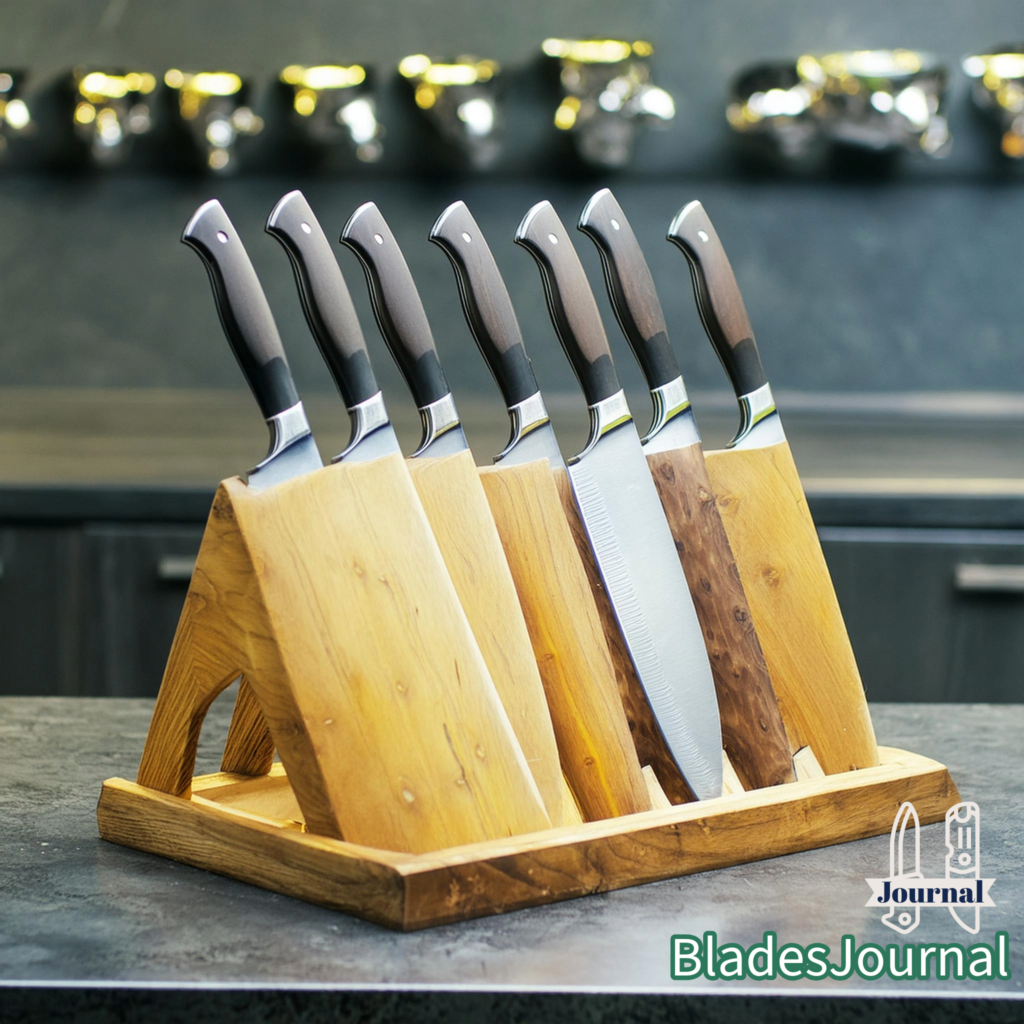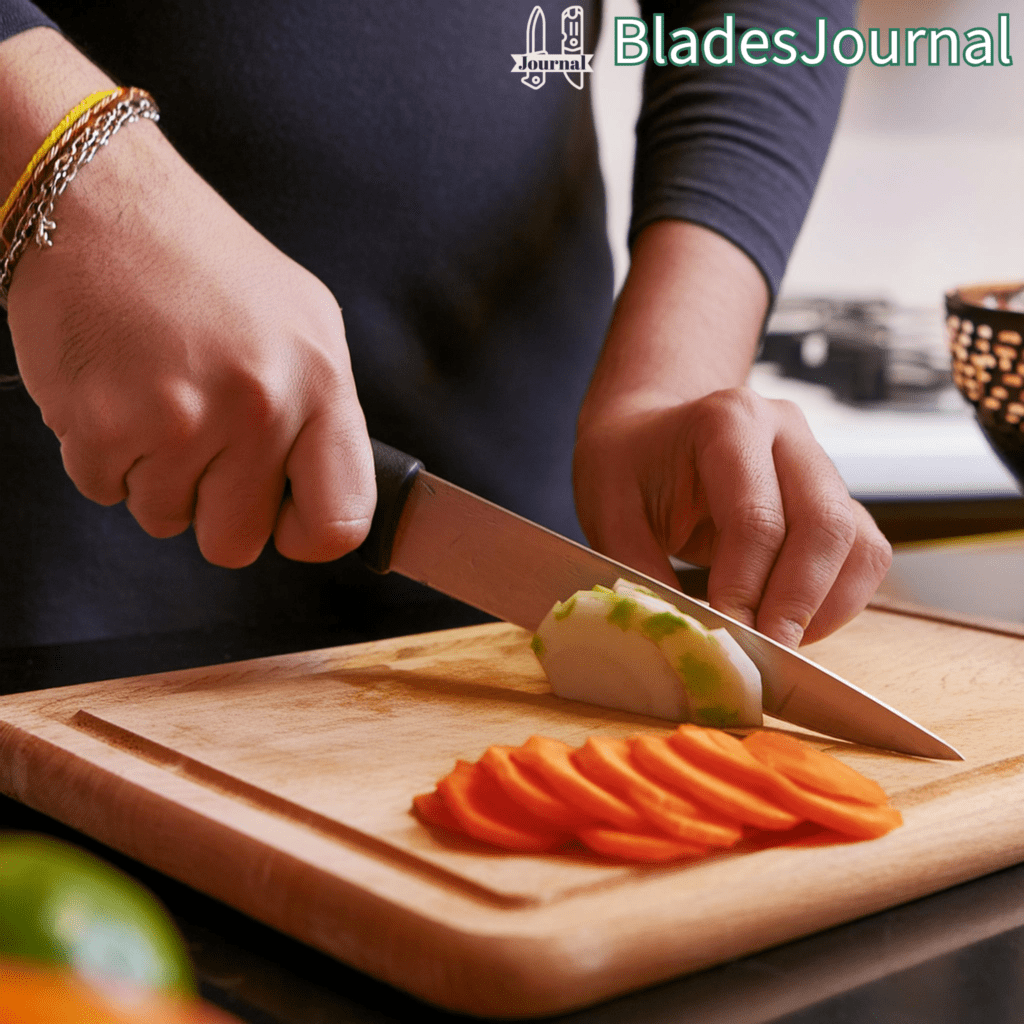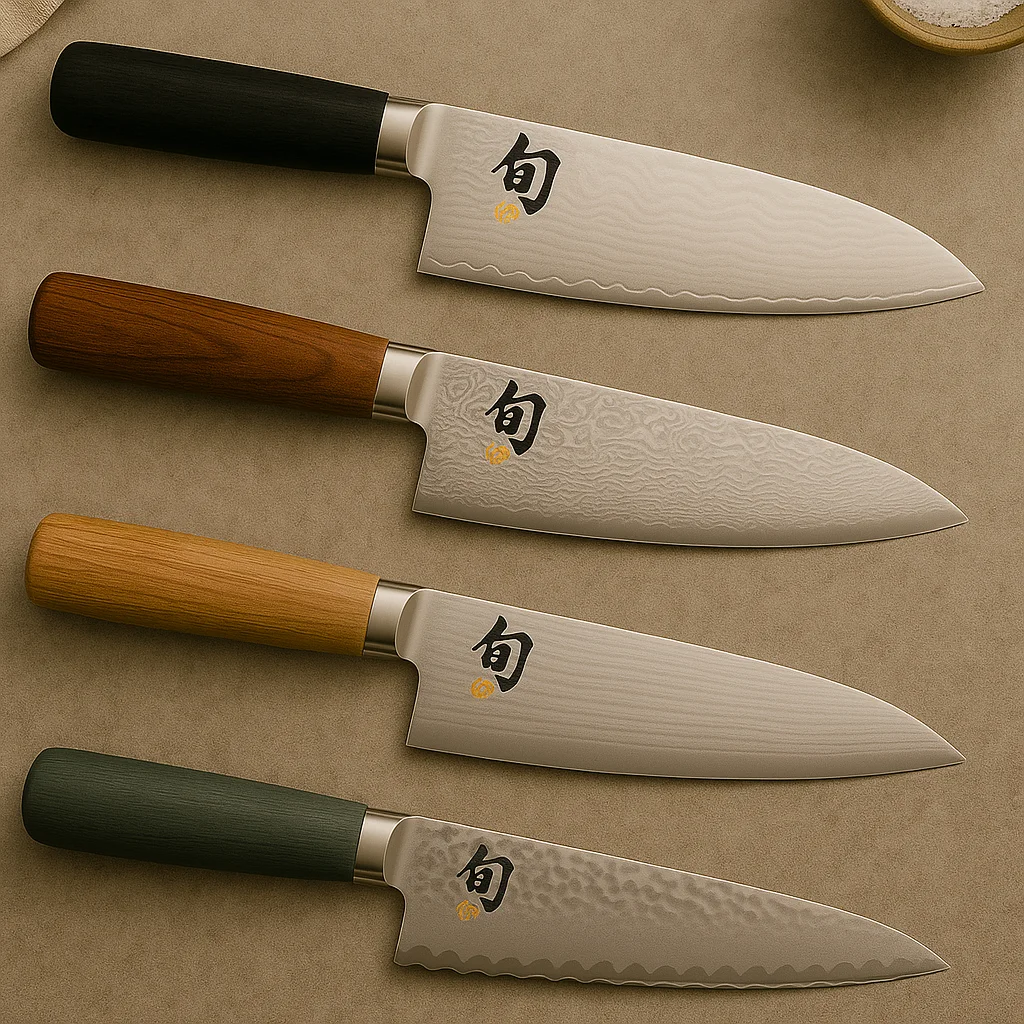Ever wondered how chefs achieve those perfect slices?
Those who are into cooking will agree that every knife has a specific role in the kitchen. Your traditional household knife cannot bring that perfection and precision.
A special knife from Japan is becoming a value addition to kitchens worldwide. A Japanese kitchen knife, the Santoku knife, is known for its durability, precision, and efficiency.
In this blog, you will learn about the different uses of a Santoku knife for impeccable cutting performance.
What is a Santoku Knife?

The Santoku knife is an all-purpose kitchen knife from Japan. Its origins date back to the beginnings of Japanese cuisine.
Its name, “Santoku,” means “three virtues” or “three uses.” These three virtues include perfection in three types of cutting tasks – slicing, dicing, and chopping.
Earlier, it was only found in the kitchens of home chefs. But now, it is also gaining popularity among professional chefs. They love the precision and finish that it brings.
Key Features of a Santoku Knife

Santoku has many features and specifications. It is designed to slice, dice, and chop vegetables, fruits, nuts, and boneless meat.
The following features of a Santoku knife show why it is the best option when you want precision in cutting. Its major characteristics include:
Blade Length and Shape
The Santoku knife blade is short. The most common blade lengths are 5.5 inches, 6 inches, and 7 inches.
Santoku knife has a thinner blade. The sheepsfoot blade design makes chopping, slicing, and dicing easy. The blade is flat with a slight curve toward the tip. It allows precise and straight cuts.
Flat Edge Profile
A Santoku knife features a straight edge. This flat profile is ideal for an up-and-down chopping technique, often called “push-cutting,” which is particularly effective for slicing vegetables, meat, and fish
Blade Thickness
Santoku knives are designed with a thinner blade. This thinness allows for more refined and precise slicing. It makes it easier to achieve delicate cuts. The thinner blade reduces resistance, leading to smoother and more efficient cutting.
Materials
Santoku knives are made from high-quality materials like stainless steel, carbon steel, and ceramic. High-carbon stainless steel is known for its durability and anti-rust features. Some Santoku knives are made of Damascus steel, known for its strength and beautiful pattern.
Granton Edge
Many Santoku knives have a Granton edge. The blade has small indentations along the edge. These indentations create air pockets that reduce friction to prevent food from sticking to the blade. This feature enhances cutting efficiency and cleanliness.
Handle Design
The handle of a Santoku knife provides comfort and balance. Handles are typically made from wood or synthetic materials. Its ergonomic design reduces fatigue during prolonged use. The balance between the handle and blade ensures ease of control and precision in cutting.
Bevels
Santoku knives have a single bevel with a sharp blade on one side. However, several modern versions have double bevels with both sides sharpened for higher accessibility.
Lightweight and Balanced
Santoku knives are generally lighter. They are lightweight and easy to handle for prolonged periods. The balanced weight distribution between the blade and handle provides stability and control. This stability enhances the overall cutting experience.
What is a Santoku Knife Used for?
- Slicing

A Santoku knife is best for slicing. It can cut meat, fish, and vegetables into thin, precise slices. The blade’s flat edge allows for clean, straight cuts, reducing the need to draw the blade back and forth.
It is useful when slicing delicate items like raw fish for sushi or sashimi, where precision is crucial. The sharpness and thinness of the blade also help maintain the integrity of the food, ensuring clean slices without tearing.
- Dicing
You can also use a Santoku knife for dicing vegetables. The sharp edge of the blade effortlessly cuts through even the toughest vegetables. You can cut your ingredients horizontally into small and uniform chunks.
The wider blade of the knife provides stability and control. It makes it easier to achieve even pieces, which is significant for perfect cooking and presentation.
- Chopping
A Santoku knife easily chops herbs, nuts, and other ingredients. Its shorter length and balanced weight make it comfortable to handle. The knife’s design allows quick, repetitive chopping motions without tiring the hand.
The flat edge is ideal for chopping tasks, enabling consistent cuts that enhance the texture and appearance of your dishes. The wide blade also helps scoop the chopped ingredients off the cutting board and into the pan or bowl.
- Mincing
You can also use a Santoku knife to mince herbs. The sharp blade allows for finer cuts, which is essential for releasing the full flavor of herbs like parsley, cilantro, and basil.
The wide blade controls the pressure to ensure delicate herbs are not bruised or crushed. It effortlessly achieves a fine, uniform texture for garnishes and dish seasoning.
So, using a Santoku knife enhances your culinary creations’ taste and appearance.
Maintenance Tips for a Santoku Knife
Maintaining a Santoku knife involves regular sharpening and cleanliness, like all high-quality knives. Here are some maintenance tips for a Santoku knife:
- Sharpen regularly with a whetstone and hone with a rod in between.
- Hand wash with mild soap and warm water. Dry immediately after washing.
- Store in a knife block on a magnetic strip or use a blade protector in a drawer.
- Inspect handles for cracks or loose parts. Oil wooden handles at regular intervals and avoid prolonged soaking.
- Use wood or plastic cutting boards to preserve the blade.
- Avoid cutting bones or frozen foods to prevent damage.
- Regularly inspect the blade for any signs of wear or damage.
Conclusion
Overall, the Santoku knife is a kitchen tool for precision and versatility. Whether you’re slicing delicate fish, dicing vegetables, chopping herbs, or mincing spices, the Santoku knife perfectly does everything.
Its unique features, such as a flat edge, thinner blade, and ergonomic design, make it a favorite among home cooks and professional chefs. With careful use and regular maintenance, you can enjoy its fantastic cutting performance for years.





Leave a Reply